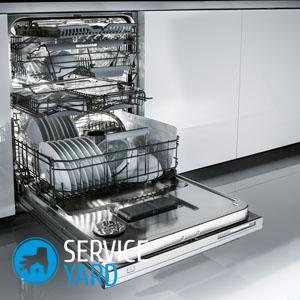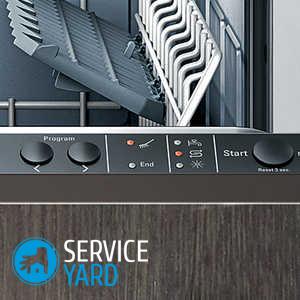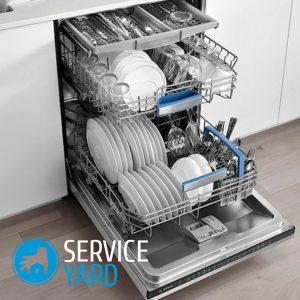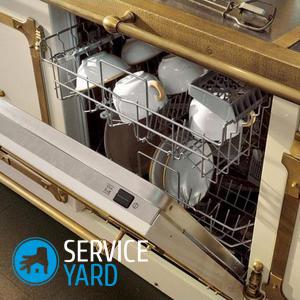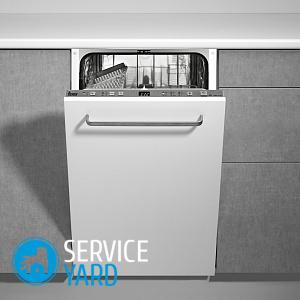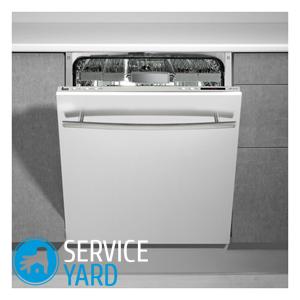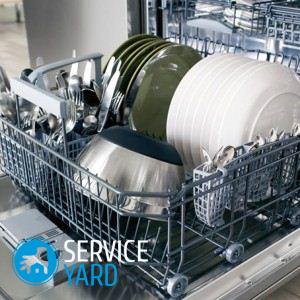How does a dishwasher work?
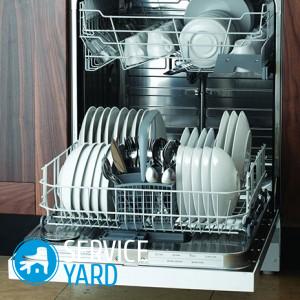
Dishwashers make life easier for modern housewives. Therefore, understanding how the dishwasher works is important enough to choose the right one and, if necessary, fix the malfunction of this technique. Otherwise, even with a minor malfunction, you will again have to wash all the plates, pans, appliances manually, waiting for the master to arrive at your home. This is not a way out of the situation, and not at all what every housewife expects from the purchase of such useful kitchen appliances. So, we will understand the principle of the dishwasher.
to contents ↑Dishwasher
Each dishwasher has a standard set of parts, which ensure the correct operation of the device.
Important! Individual models differ from others in an additional set of functions, which we will not consider, since they are so specific that it is not possible to verify their operation on site.
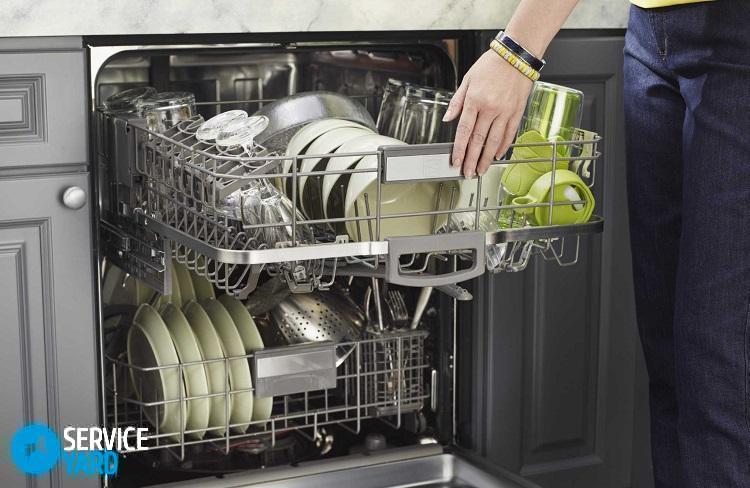
Important! According to the installation method, all dishwashers can be divided into built-in and freestanding. We prepared separate reviews where we described each of the types of this technique:
In order to get acquainted with the internal device, just open its front wall. The list of the main components of the device of the dishwasher includes:
- Control panel - located on the front wall of the machine. The controls are located on it: a timer, a screen (if the model provides for it), a set of buttons.
- Board with processor for program management.
- Electric motor - launches the entire internal system.
- Dispenser for detergents.
- Air path required for the dryer.
- Baskets - for cutlery, plates, cups, etc.
- Rocker arms - provide supply and even distribution of detergent and water to all kitchen utensils loaded into the machine.
- Pump - is responsible for the supply of water from the water intake.
- Filter system and water softener - necessary to purify water from the system before using it for its intended purpose.
- Sump and drainage - the system ensures the discharge of waste water.
- TEN - is responsible for heating water to a predetermined temperature.
- Counterweight - provides stability of the unit.
- Water supply valve - controls the volume of water flow.
- Sprayers consist of a system of tubes and sprayers. Through them, water is supplied into the machine under pressure.
- Capacitor.
- The detergent container is usually located on the wall of the door of the device.
- An ion exchanger is a reservoir that contains resin to soften water.
- Capacity for salt.
- The float regulator is the main means of protection against leaks.
- The drain hose and nozzles, as well as other tubes and hoses connecting the system as a whole.
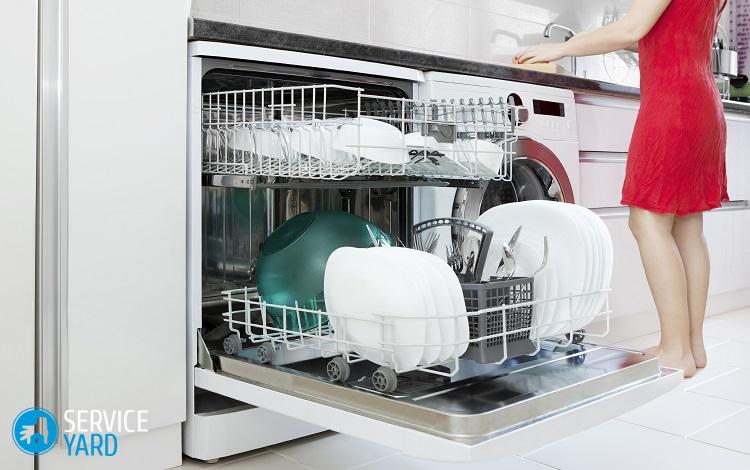
Device differences
Some functions are not inherent in all brands of dishwashers. The following list presents features in the design of the dishwasher:
- A heat exchanger is a plastic tank of a sufficiently large width that accommodates cold water and is located next to a metal tank. There is to reduce energy consumption when drying dishes.
- A sensor that detects the purity of water.
- Sensors for all detergents. Present in many modern cars.
- Fan and additional element for heating.The presence of these elements means the organization of turbo drying. But such an innovation is not found in all models. So, any of the possible devices of the Bosch dishwasher does not have a similar function.
- Drying sensor.
- Holder for glasses.
- Mineral Reservoir - Used for drying.
- Sprayer for washing baking sheets.
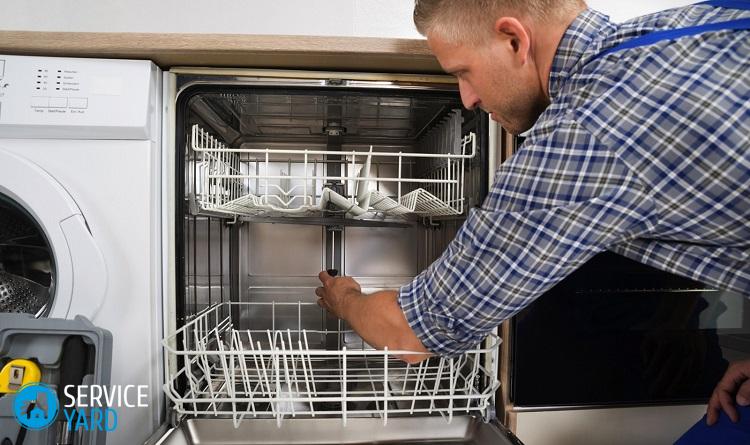
The basis
The basis for a set of these parts - both primary and secondary, is a sealed metal case. Inside, it is coated with a stainless alloy, which is not sensitive to temperature extremes and detergents. It is also equipped with sound and heat insulation.
to contents ↑Principle of operation
The principle of operation of the dishwasher is hidden from the eyes of an outsider. All work is presented in the form of loading dishes into the basket and pressing a couple of buttons. At the same time, we can strongly recommend that you deal with what is happening inside this unit after pressing the “Start” button.
In a generalized form, the dishwasher works like this:
- There is a starting drain of water.
- Bay of clear water.
- Start of the washing program.
- Adding detergents.
- Heating water to the desired temperature.
- Dish washing itself.
- Draining.
- Rinse water
- Rinse.
- Drain after rinsing.
- The last item - drying dishes using a fan or condensation drying.
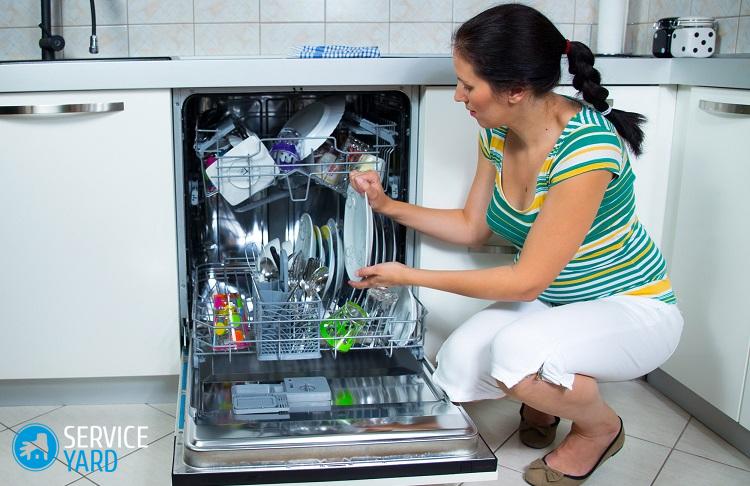
Important! Do you like to relax with your company in the country? And how do you wash the dishes there after the feasts? Even in the country, enjoy all the benefits of civilization. Find out on our portal for helpful tips on how to choose cottage dishwasher.
Washing programs
There are many programs that are used for washing dishes. All of them can be divided into 3 main categories:
- Programs that indicate what additional actions to perform before and after the main wash. For example, soaking.
- Temperature conditions - the degree of water heating.
- The execution time of certain manipulations can vary according to the basic settings or according to the user's personal preferences. It all depends on the specific model.
The dishwasher works after installing all the programs according to the following principle:
- The microprocessor checks the door is closed, and then sends commands to the pump.
- After completion of the pump, a set of water is made, which is controlled by a special sensor.
- After water flows under pressure on the impeller, the latter begins to rotate. At the same time, the dispenser with detergent opens and it enters the interior of the device.
- Upon completion of washing and drying, a sensor is triggered, the signal of which instructs the microprocessor to open the front wall lock and notify the end of the process.
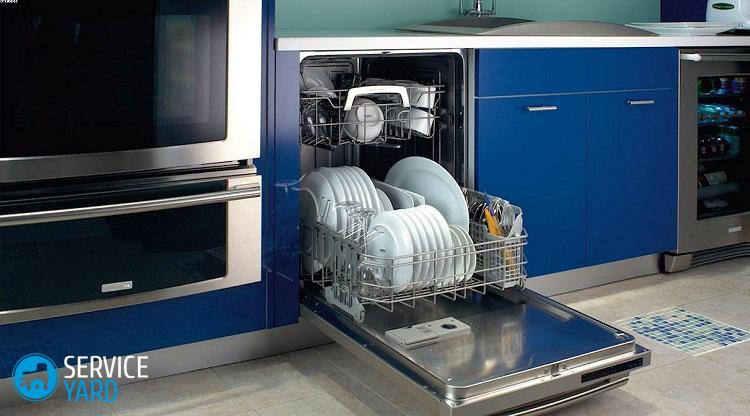
to contents ↑Important! Dishwashers are produced by all well-known manufacturers of household appliances. The following brands are most popular, the technology of which we have separately considered in thematic reviews:
Repair and maintenance of the dishwasher at home
Now that we have learned everything about the device of the dishwasher, we will analyze some of the most common problems that arise with this device and ways to solve them.
White or dirty stains on dishes
This problem occurs if you have loaded too much (white streaks) into the device, or, on the contrary, too little (dirty leaks), detergent, salt or rinse aid.
To solve this problem, it is necessary, respectively, to reduce or increase the dosage.
Bad water discharge
This happens when filters become clogged with food debris. It is recommended to clean them no less than after 2 wash cycles.
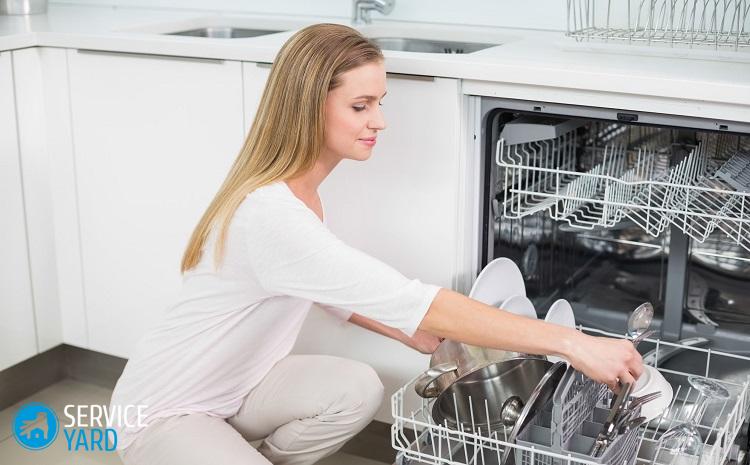
Excess foam
An excess of foam occurs in the situation when the rinse aid is loaded more than normal. This problem is solved by adjusting the dispenser of the machine and increasing the amount of powder, which is an excellent defoamer.
Other reasons
Among the less common causes of poor-quality operation of the device can also be:
- Incorrect placement of dishes.
- The impeller malfunction or its inability to spin due to excessive loading of the device.
- The detergent supply is blocked, or it has run out.
- No water is supplied - to find out the cause, you need to check the nozzles, if necessary, clean them with a stream of water, before removing them from the device.
- Wrong mode selection.
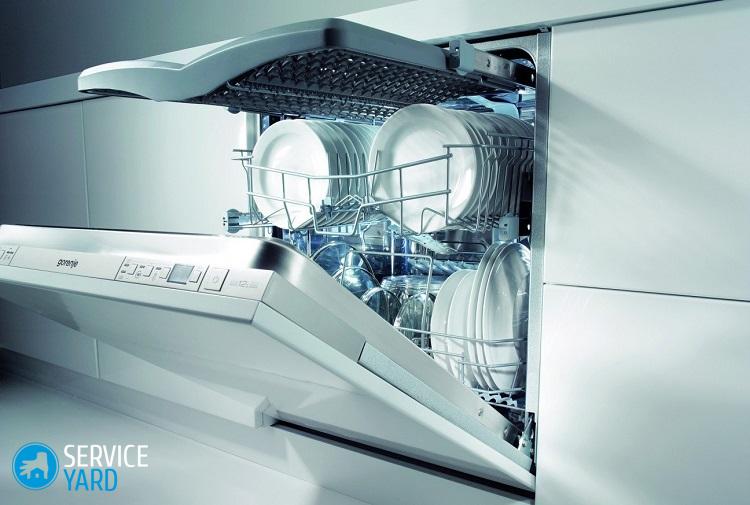
Troubleshooting
In the event that you are sure that the cause of poor-quality work is not improper operation, and checking all the previous paragraphs this confirms, most likely, technical problems have occurred.
Among them, the most common:
- Extraneous sounds during operation - may indicate damage to the bearings, sprayer, main or drain pump units.
- The lack of water in the chamber - most likely, the exhaust valve is broken: you need to replace it.
- Stopping the machine in the middle of a cycle most likely means a faulty pump. Also check the recirculation filters, the water heater and the water intake.
- Washing takes place with cold water - the machine probably does not have a temperature sensor, or it has broken, so the programmer did not notice that a system failure had occurred. Also, the culprits may be failed heating elements or automatic heating.
If the machine does not work at all, then the following factors may serve as the reason:
- The door is loose.
- Lack of water in the chamber.
to contents ↑Important! If the machine does not turn on and has an electric shock, most likely an electrical circuit has broken. Check all power cords.
Stock footage
Now you know how the dishwasher works, what could be the cause of this or that malfunction. So - you can easily solve the problems that arise in such situations. Do not forget to refer to the instruction manual, adhere to elementary safety rules, and most of the problems you can solve yourself without resorting to the help of a specialist.




